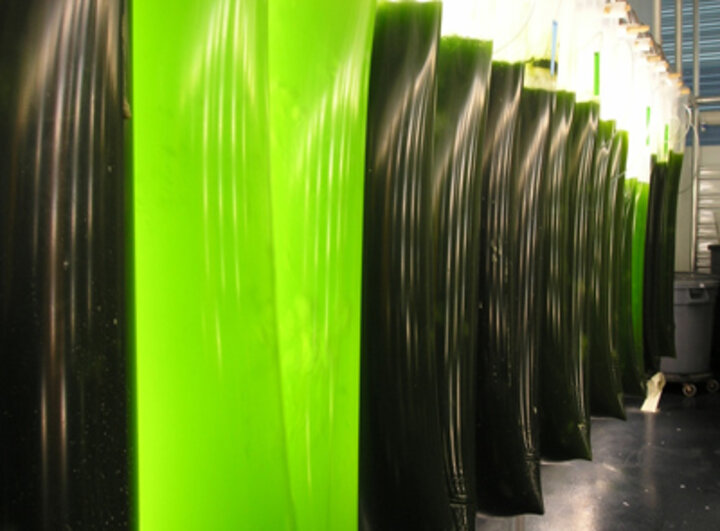Algae may be the next frontier for biofuels, and the University of Nebraska-Lincoln is poised to be among the nation's leaders in this research.

Part of the greenhouse complex at UNL's Beadle Center will be revamped into an algal biofuels research facility this year. Scientists will begin growing algae in small containers, then move on to five-foot long bags and, finally, a "raceway" — a small, oblong pool — as they seek answers to two key questions:
- What algae cultivars are best suited for biofuel development? There are at least 200,000 different algae, and ultimately genetic modification may play a role in engineering algae to produce the most lipids — specifically, triglycerides — possible for conversion to fuel.
- How can the triglycerides be most cost-effectively extracted from the algae to produce biofuel?
UNL already has received $1.9 million in federal funding for the research. It's also in line for tens of millions more in funding for several related research angles, including one that would couple this new research with
UNL's already robust corn-ethanol byproducts research.
"There are multiple initiatives percolating," many of them involving partnerships that include several universities as well as private companies, said Paul Black, a lipid biochemist who's part of UNL's team.
UNL is positioned to be among the research leaders in this burgeoning field because it has renowned scientists in the areas of algal virology, algal molecular biology, lipid biochemistry, plant genetic engineering and
more, said Black, who heads UNL's Department of Biochemistry.
Algae have appeal for biofuels because they have the potential to produce much more biomass per unit than other crops. The oil content in algae can comprise 30 to perhaps 50 percent of its weight, said George Oyler, a research associate professor in biochemistry hired last fall to coordinate these efforts.
Potentially, algae could yield up to 6,000 gallons of oil per acre annually. That compares to 43 gallons for soybeans, 86 for sunflowers and 171 for canola.
Algae also do not compete with food crops; do not require premium farmland; can grow on waste, salty and brackish water; and are not as nutrient-intensive as other biofuels crops.
It's worth noting that much of the oil now being pumped from the ground likely originated with algae, said James Van Etten, plant pathologist.
However, the challenges of turning algae into economically viable biofuels are significant.
"Major breakthroughs in both engineering and biology are required," said Oyler, who noted that currently a gallon of algal biodiesel would cost $10 to $30 per gallon.
"This is sort of like starting with corn 2,000 years ago," said Van Etten, who will be studying the threat of pathogens to algae. "In many respects, that's where we stand right now with algae."
As exotic as algae research may seem, Van Etten predicted that some long-standing agricultural principles will come into play. For example, algae producers may find success in rotating crops, growing different kinds of algae from year to year. "That's Agronomy 101," Van Etten added.
One key to making algal biofuels economically viable will be to develop co-products from the manufacturing process, said Ed Cahoon, a lipid biochemist. For example, it may be possible to develop livestock feed, just as distillers grains have resulted from corn ethanol production.
In fact, algae production could fit in well with Nebraska's synergistic corn-ethanol and livestock industries, Oyler said. Algae grows faster with increased carbon dioxide. It might be possible to route carbon dioxide produced during corn-ethanol production to nearby algae raceways. The manure produced by cattle, which are fed wet distillers grains produced during ethanol production, could in turn be used to fertilize algae.
"If you can join these plants with algae production, you're growing algae faster and using up some of that carbon dioxide," Oyler said.
"You're taking first-generation biofuels (ethanol) and making advanced biofuels. Economically, that's a big deal," Oyler said.
"You're not getting down to carbon neutral," Black said, "but you're certainly reducing carbon footprint."
Ultimately, algae may be grown on sheets of cellulosic paper, where it could be possible to produce as much as five times more algae than in ponds.
Researchers predict spinoffs from the algae research could result in new drugs to treat cancer, diabetes and obesity.
Black predicts some tangible, modest results in five to 10 years, with large scale production of algal biofuels likely another 10 years after that.
Daniel Moser
IANR News
